Tactically brilliant and with brute force – Pep Guardiola and Manchester City are very close to redemption in the Champions League after a real demonstration of power. In a dominant performance, Manchester City emerged victorious with a resounding 4-0 victory over Real Madrid.
Of course, everyone looked at Pep Guardiola before the game. Would the passionate football pioneer conjure up some tactical magic bullet out of his pocket again? One of the kind that had also gone wrong in the past few years? In this tactical analysis, we will discover both teams’ tactics. Additionally, the analysis will highlight Manchester City’s superiority in various aspects of the game.
Lineups
Pep Guardiola, who finally wants to win the first title in the premier class with City, had announced “no thought” to the press representatives and remained true to his statement. He fielded exactly the same eleven with whom he had coached away in Madrid.
Man City deployed their formidable lineup to assert their dominance. Ederson, known for his distribution and shot-stopping ability, stood tall in goal. The defensive line featured Kyle Walker, the commanding Rúben Dias, and Manuel Akanji. The midfield trio of Rodri, John Stones, and Ilkay Gündoğan provided a strong foundation, while the creative talents of Jack Grealish and Bernardo Silva added flair and ingenuity to City’s attacking play. The dynamic duo of Kevin De Bruyne and Erling Haaland spearheaded the City attack, supported by the substitutions of Phil Foden and Riyad Mahrez who offered additional attacking options.
It was Guardiola’s opponent who caused the surprise of the day before the match. Carlo Ancelotti left Antonio Rüdiger on the bench, and Éder Militão was given preference. It was surprising in that the German was absolutely convincing as a man-marker against Erling Haaland in the first leg. The Norwegian was practically eliminated.
Real Madrid‘s starting lineup featured the experienced Thibaut Courtois in goal, providing a reliable presence between the posts. The defensive line consisted of Dani Carvajal, Éder Militão, David Alaba, and the young Eduardo Camavinga, who started as a left-back. In midfield, the trio of Toni Kroos, Federico Valverde, and the maestro Luka Modric were supposed to bring their creative and technical abilities to the game. Up front, the attacking trio of Rodrygo, Vinícius Jr., and the prolific Karim Benzema aimed to trouble the Manchester City defence with their pace and goalscoring prowess.
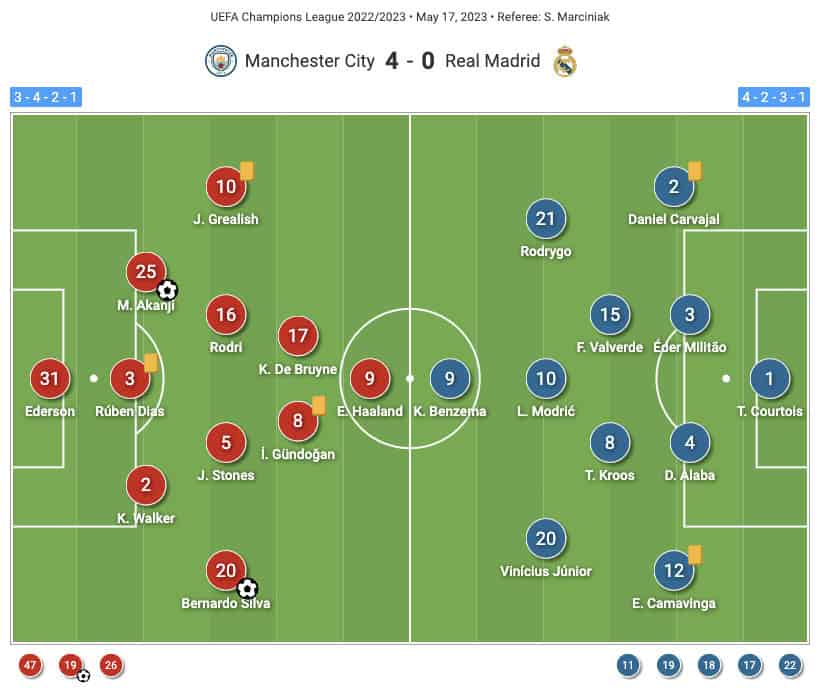
With these lineups, both Real Madrid and Manchester City showcased their depth and quality in various positions on the field. The stage was set for an exciting clash between two footballing powerhouses, as the players took to the pitch, ready to showcase their skills and compete for victory.
City’s well-executed pressing
There was a major difference from the first game which was the way Manchester City was pressing Real Madrid. Grealish came inside to press Militão, while Akanji jumped aggressively onto Carvajal. Manchester City simply suffocated Real Madrid which resulted in maybe the best 45 minutes of Pep’s coaching career.
The goal-kick length disparity is quite significant, with Manchester City averaging a goal-kick length of 60.9 compared to Real Madrid’s 18.6. This discrepancy suggests that City’s goalkeeper preferred longer goal-kicks, aiming to find teammates in advanced positions or to launch quick counterattacks. On the other hand, Real Madrid opted for shorter goal-kicks, potentially looking to build from the back with shorter passes.
The asymmetric structure that Manchester City used to press Real Madrid’s goal kicks was essential in limiting the opposition’s possession as the latter tried to overload the left flank. This was a benchmark performance in every department.
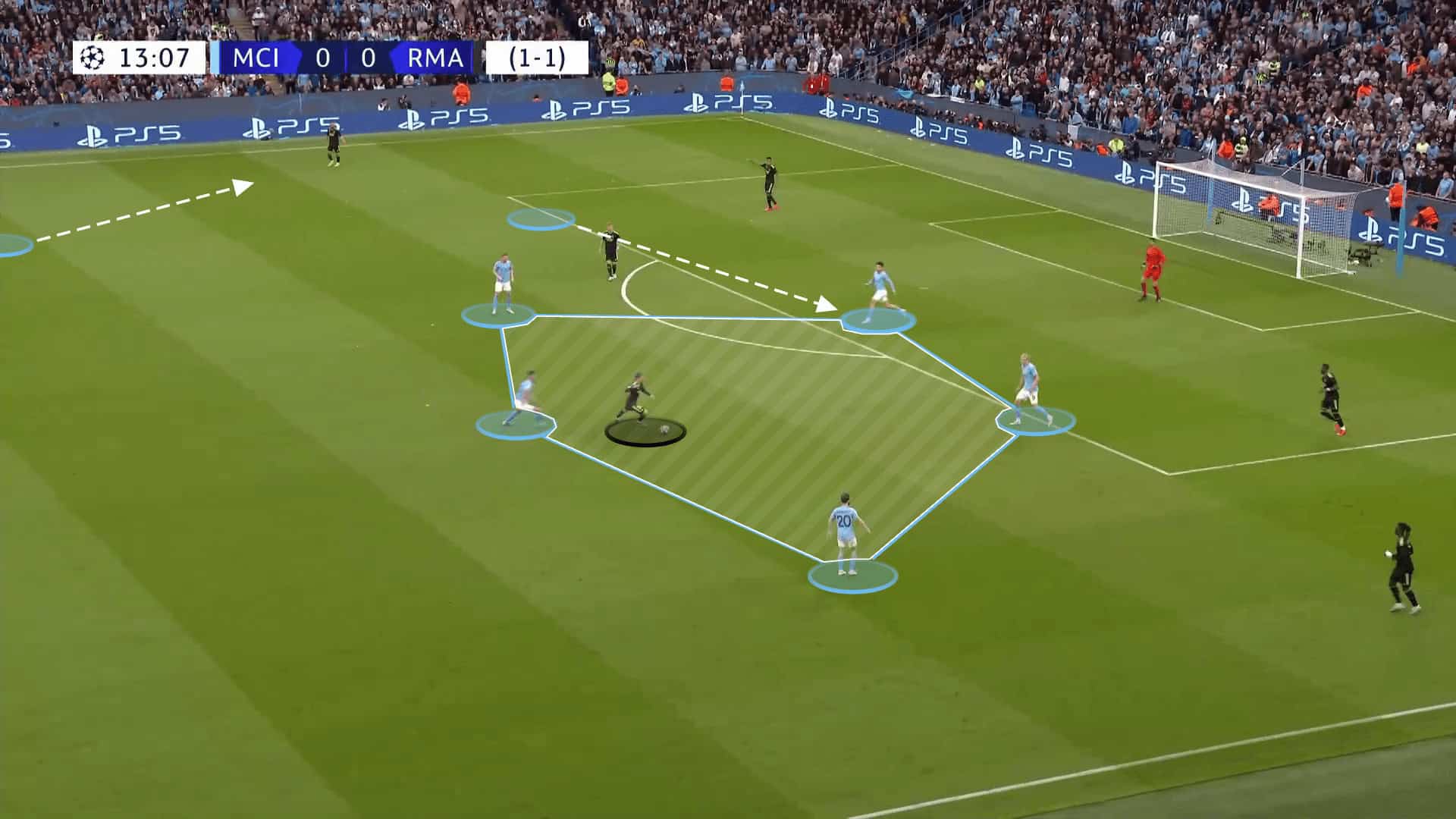
The Passes Per Defensive Action (PPDA) metric provides insight into a team’s pressing intensity and defensive efficiency. City’s low PPDA of 8.5 signifies their effective pressing and ability to regain possession quickly, limiting Real Madrid’s time on the ball. Real Madrid, with a higher PPDA of 11.3, faced difficulties in disrupting City’s rhythm and implementing their own pressing game.
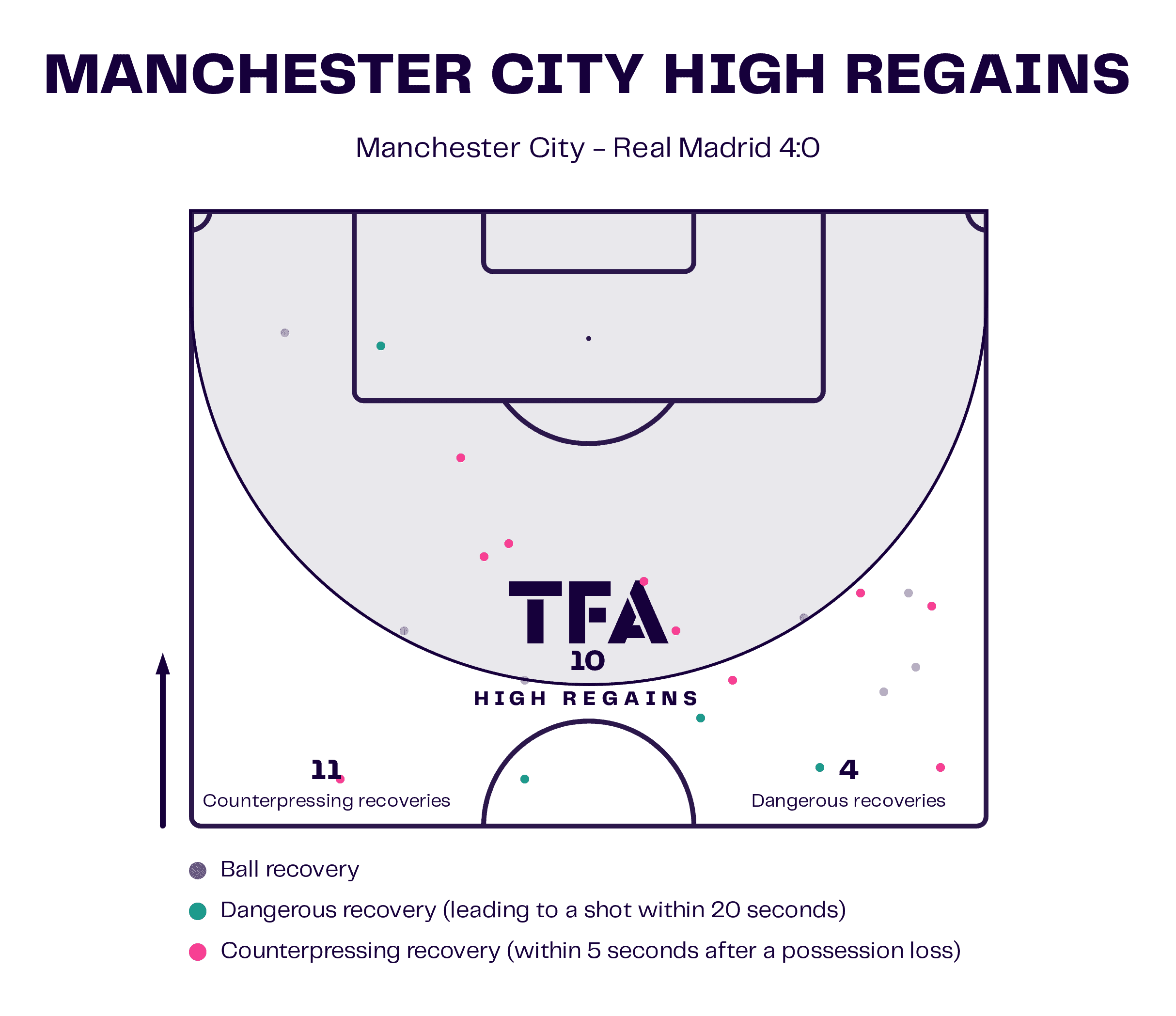
The turnover battle further underlines City’s dominance, as they forced Real Madrid into high turnovers on 12 occasions. City’s relentless pressure and well-executed defensive tactics disrupted Real Madrid’s passing sequences and forced costly mistakes. In contrast, City limited their own turnovers to just 1, demonstrating their discipline and composure in possession.
City’s dominance in possession
It was 72% possession for Manchester City in the first half. Even after 15 minutes into the game, Real Madrid only had 13 completed passes compared to Man City’s 121 passes. The first 20 minutes for Real Madrid were luring Manchester City into a false sense of security. Real Madrid don’t need possession to score. They also had goal-scoring opportunities like the long-range shot from Toni Kroos.
However, it did make a difference that Manchester City’s passes came off much more clean at home than they did in the first leg away to Real Madrid. The precision and efficiency of City’s build-up play were evident in their high completion rate of 90.6%. This signifies their ability to maintain possession and construct attacks with great composure and accuracy. Real Madrid, on the other hand, achieved an 84.1% completion rate, highlighting their struggle to assert control and sustain meaningful attacks.
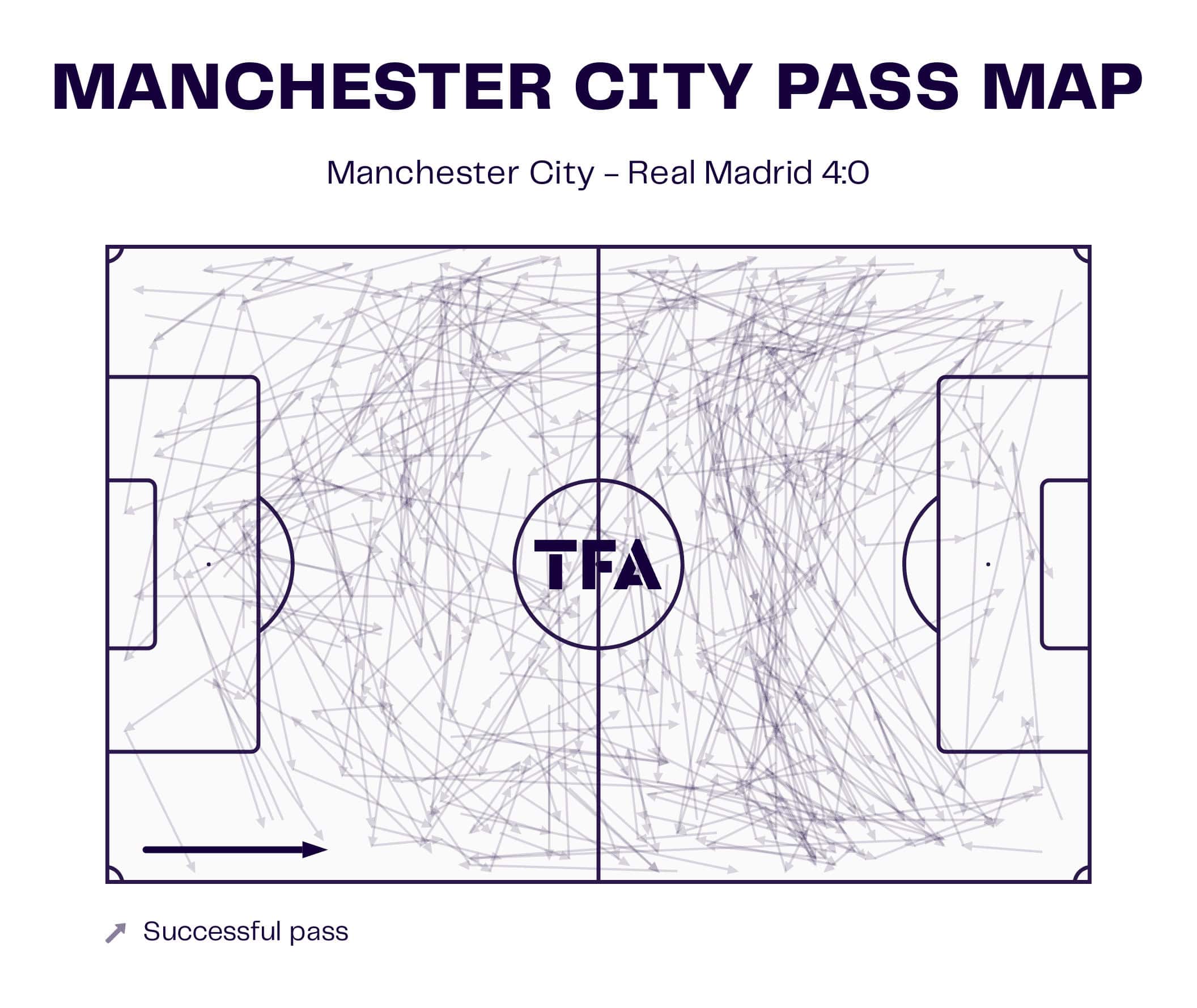
Pass directness, with Manchester City registering 25.5 compared to Real Madrid’s 30.5, indicates a slight difference in the teams’ preferences when it comes to the length and direction of their passes. This suggests that Real Madrid opted for a slightly more direct approach, looking for longer passes to advance the ball, while Manchester City demonstrated a slightly more measured and controlled passing game.

The number of 10+ pass sequences further reveals Manchester City’s dominance in maintaining possession and building sustained attacks. City recorded an impressive 26 instances of 10 or more consecutive passes, showcasing their ability to control the game and keep Real Madrid chasing shadows. In contrast, Real Madrid managed only 12 such sequences, indicating their difficulties in breaking City’s solid passing patterns.
Dragging out Camavinga
The shot count tells the story of City’s attacking prowess, as they registered a remarkable 8 attempts on target compared to Real Madrid’s 3. This display of clinical finishing and goal-scoring proficiency was a testament to City’s offensive firepower.
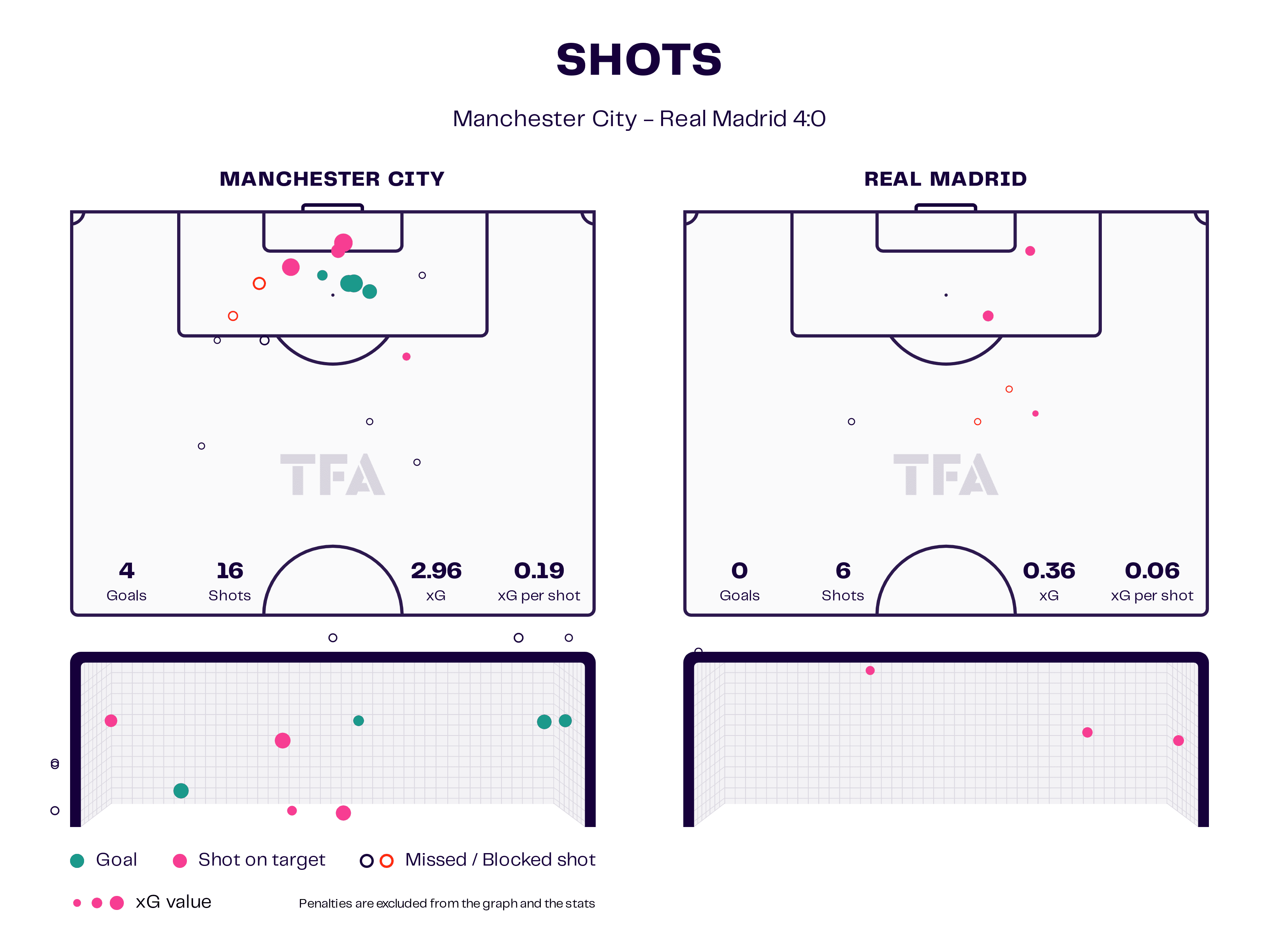
Manchester City’s Bernardo Silva was the Man of the Match, but he did not only score two goals. He also did a great job of dragging Camavinga wide and away from Real Madrid’s goal. This opened up lots of space to the left-hand side of Alaba. Manchester City scored this way and even have missed a few other opportunities to attack this space.
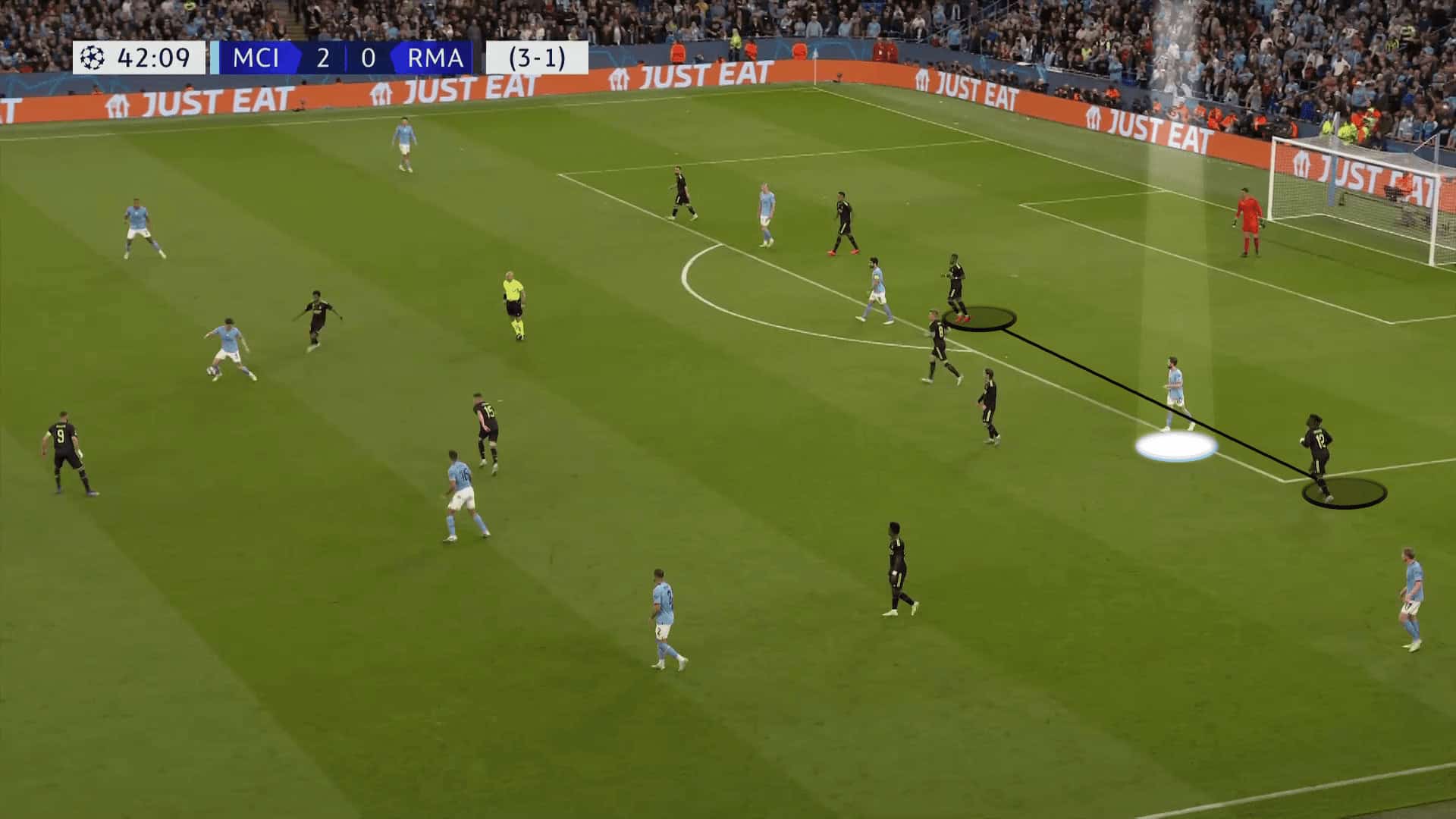
Before the second goal of the evening, left-back Camavinga shifted to the right side. His poor positional awareness, combined with the bad communication between Carvajal and Kroos, led Real Madrid to concede a goal. There were a lot of individual mistakes.
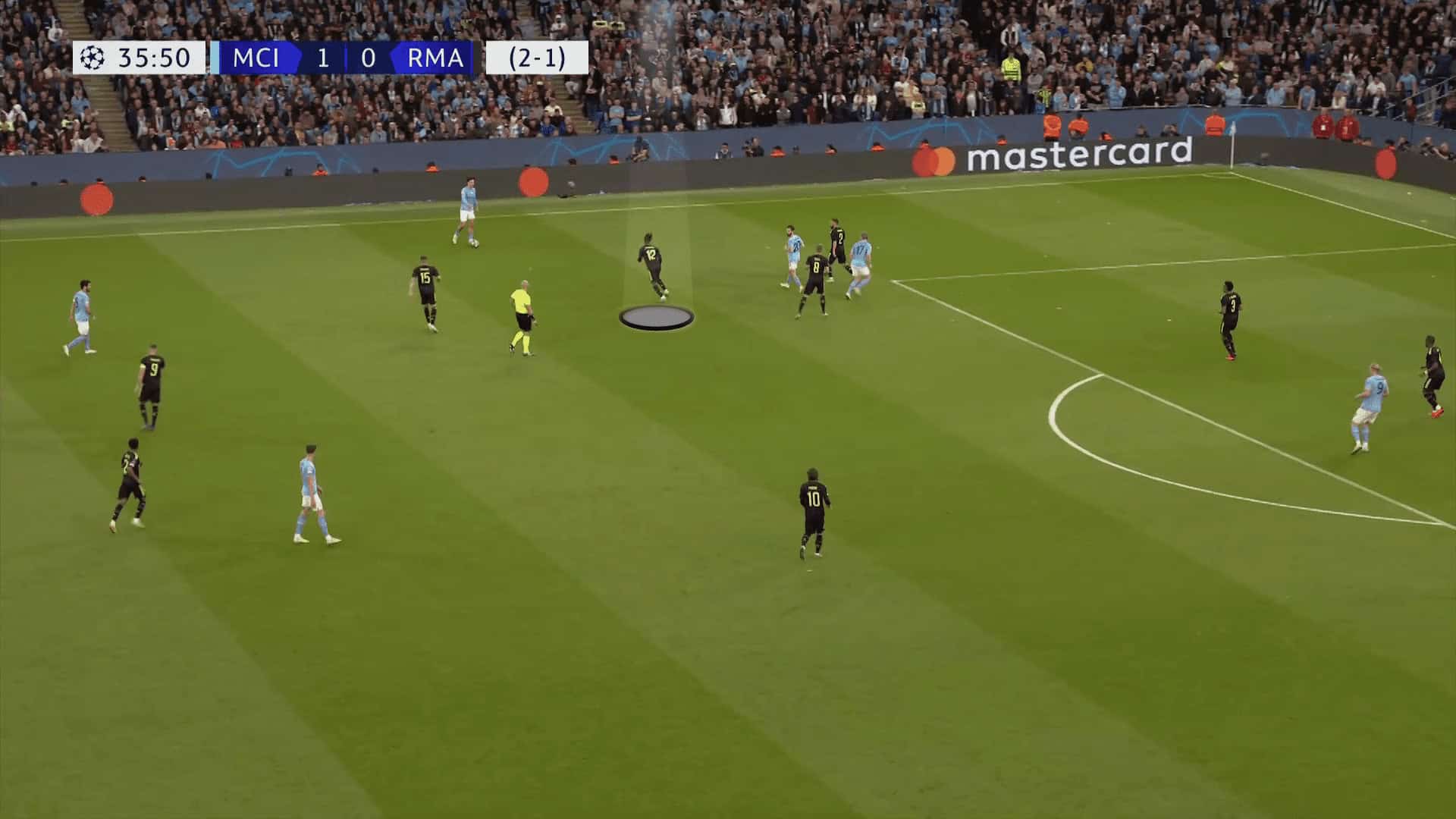
Alaba covered the left-back position due to Camavinga shifting to the right to prevent Manchester City’s far post crosses. Militão left his position and followed Alaba because he thought Camavinga would cover his position, but he didn’t as we can see. And this created a big gap in half-space.
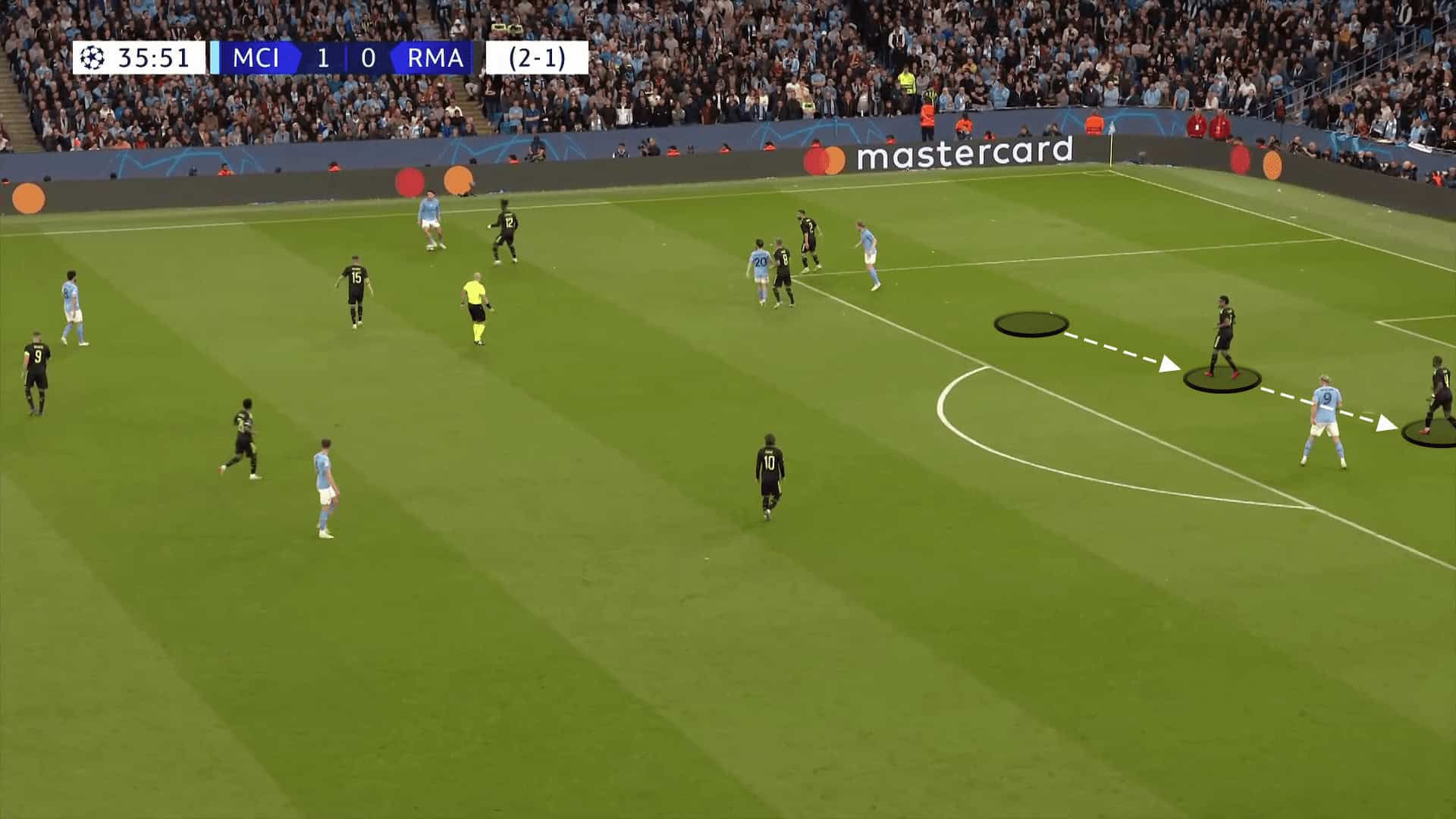
Ilkay Gündoğan saw the gap and cleverly ran into it. Then Man City managed to score. Carvajal and Kroos’ positioning played a role too. Carvajal should have gone to Grealish and Kroos should have covered the half-space but due to their poor communication, they couldn’t do it.
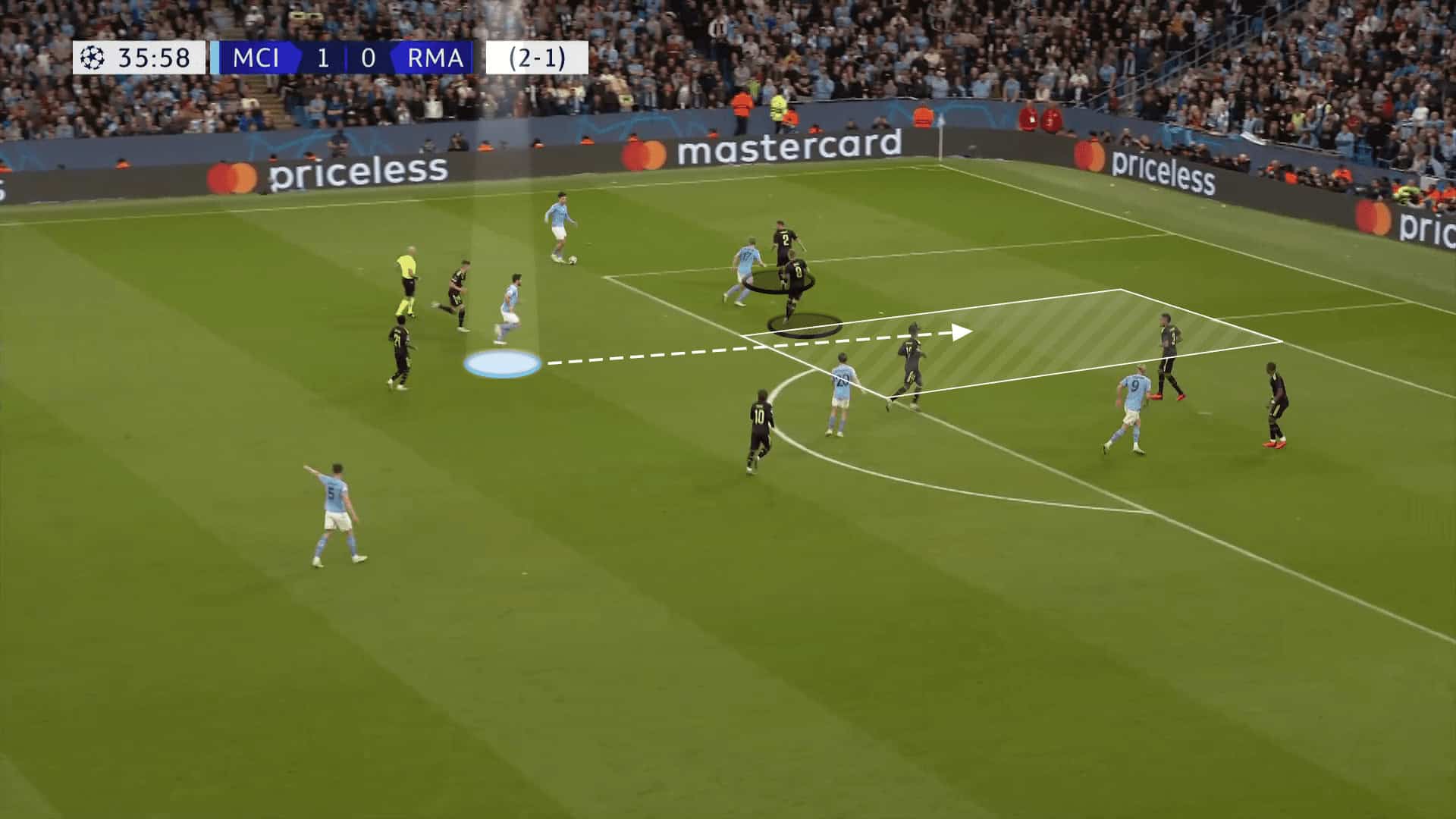
Other key duels
On the other hand, Erling Haaland dropping deeper made a huge difference for Man City. He dragged Éder Militão out of position, opening space for Gündoğan. Gündoğan found pockets of space, he just needed to get one of the Manchester City midfielders to notice. In the 64th minute, Gündoğan was found in one of his pockets of space in the right half-space for the first time.
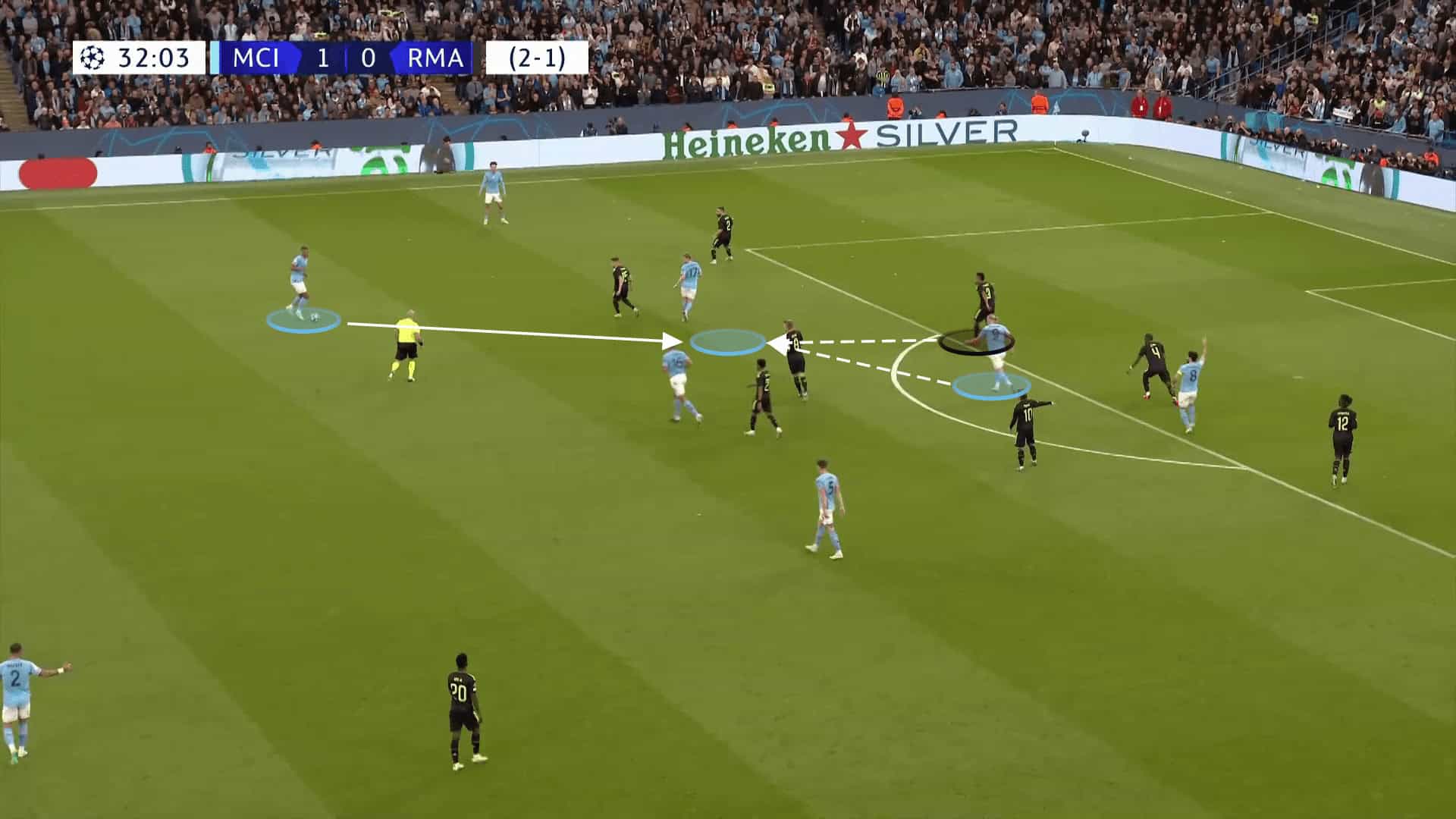
In general, Manchester City did a great job in their final third passes. Deep completions, indicating successful passes in the opposition’s defensive third, further emphasise City’s control and penetration. City recorded an impressive 20 deep completions, leaving Real Madrid struggling to contain their relentless attacking waves. One point is that Manchester City has been with 9 players within the last 35 meters of the opponent’s half for most of the time. Their attacking mindset and willingness to take risks showcase their determination to secure victory.
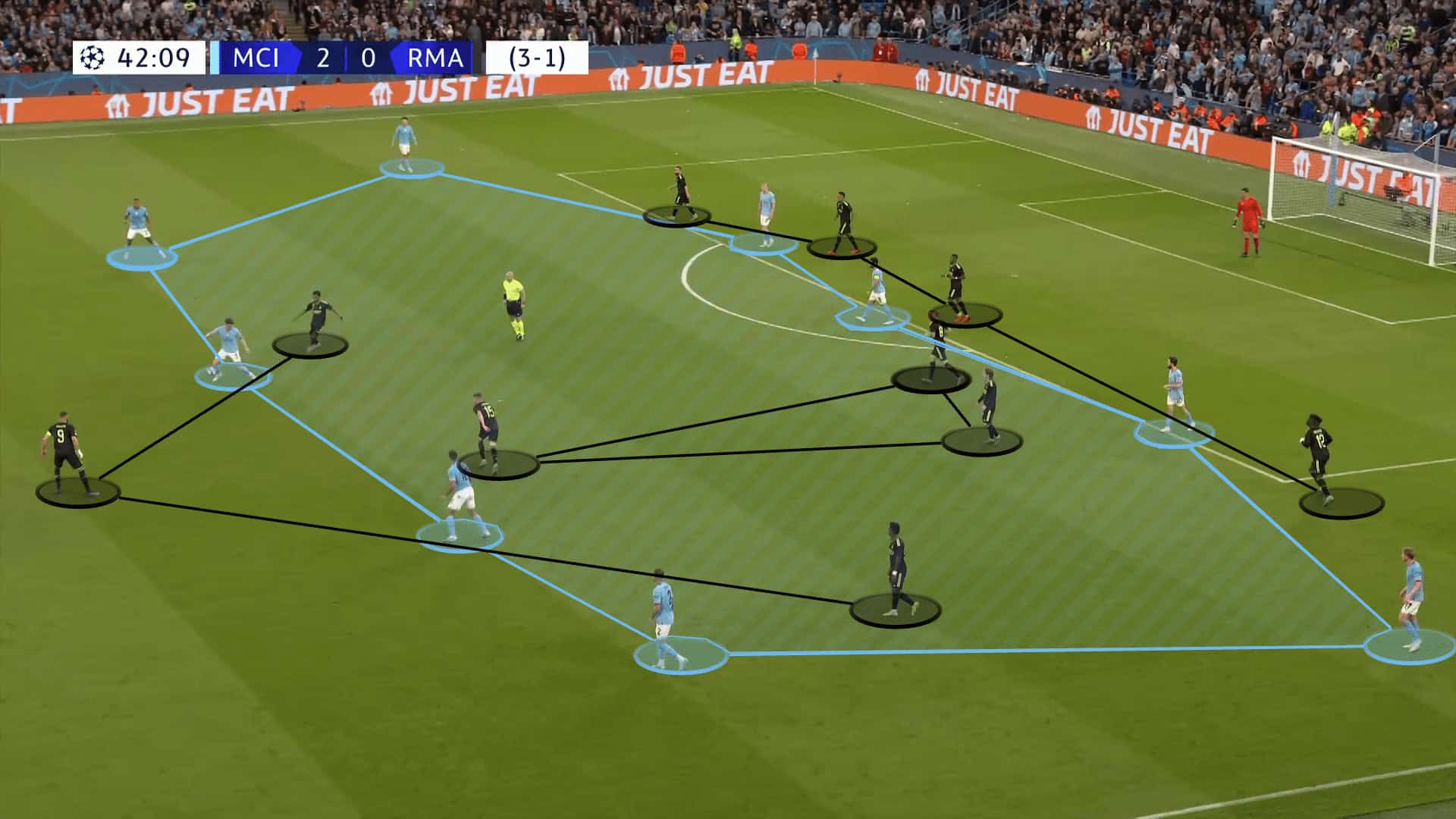
In contrast, Real Madrid managed only 4 deep completions, a clear indication of their difficulties in breaking through City’s defensive lines. By trying to play into the final third, Los Blancos looked for Vinícius Jr. to play out his skills and pace against Kyle Walker. But this time, Kyle Walker stayed back. He was more smart about when he chooses to drive up the right wing and was not doing it on every possession. He was fully dialled in and more aware of his marker than he has been all season for Manchester City.
Vinícius was limited to just 1 shot off target, 19 passes (14 successful), and 39 touches. His greatest strength is his dribbling obviously, but Vinícius only ran at him twice, neither of which was successful.
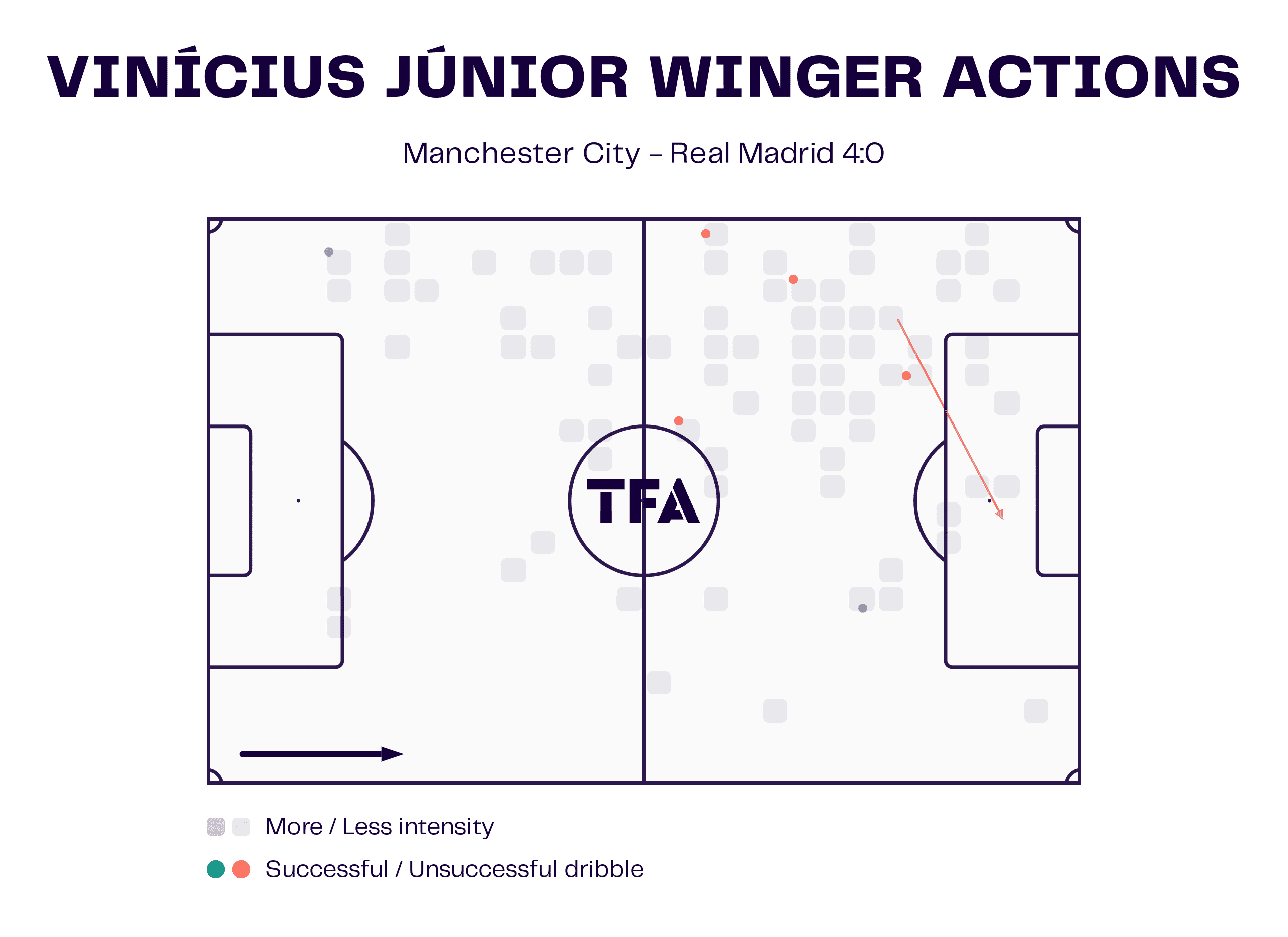
Conclusion
Pep Guardiola has been waiting for his third Champions League triumph for twelve years. Neither with FC Bayern nor with City did he manage what he did twice in Barcelona in his first three years as a coach. But now the title in the premier class seems close.
City has been showing world-class performances for months. His team can control the game, they always could, but thanks to Haaland they are now also a force in counterattacks.
City are the clear favorites in the final against Inter Milan on June 10 in Istanbul and could make history in the famous city.





Comments